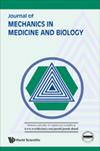非线性波束形成器中相干系数与符号相干系数的比较
IF 0.6
4区 医学
Q4 BIOPHYSICS
引用次数: 0
摘要
近年来提出了一种新的非线性波束形成器——双级延迟乘和(DS-DMAS),作为延迟乘和(DMAS)算法的一种改进。DS-DMAS将DMAS扩展为多个项的和,并将这种和称为延迟和和(DAS)。为了解决DAS的不足,DS-DMAS用DMAS取代了DAS。然而,在DS-DMAS算法中,新信号的构造仍然采用DAS方法。虽然DAS是一种完善可靠的方法,但其输出仅取决于信号幅度。因此,提出了基于信号相似度的方法,如相干系数(CF)和符号相干系数(SCF)来衡量DAS输出并优化其性能。考虑到这一点,我们将CF和SCF合并到DS-DMAS中对每个新生成的信号进行加权,从而产生了基于相干因子的双级延迟相乘和(DS-DMAS-CF)和基于符号相干因子的双级延迟相乘和(DS-DMAS-SCF)方法。我们的重点主要是比较DS-DMAS-CF和DS-DMAS-SCF的性能。结果表明,与DS-DMAS-CF相比,DS-DMAS-SCF具有更好的噪声抑制能力。本文章由计算机程序翻译,如有差异,请以英文原文为准。
A Comparison of Coherence Factor and Sign Coherence Factor Applied to a Non-Linear Beamformer
A new nonlinear beamformer named Double-Stage Delay Multiply and Sum (DS-DMAS) has recently been proposed as a variant of the Delay Multiply and Sum (DMAS) algorithm. DS-DMAS expands DMAS into a summation of multiple terms and considers this summation as Delay and Sum (DAS). In order to address the shortage of DAS, DS-DMAS replaced the DAS with DMAS. However, the construction of the new signal in the DS-DMAS algorithm still employs the DAS method. While DAS is a well-established and reliable method, its output is solely dependent on the signal amplitude. Therefore, signal similarity-based methods such as the Coherence Factor (CF) and the Sign Coherence Factor (SCF) have been proposed to weigh the DAS output and optimize its performance. Taking this into consideration, we incorporated the CF and SCF to weigh each newly generated signal in DS-DMAS, resulting in the Coherence Factor-based Double-Stage Delay Multiply and Sum (DS-DMAS-CF) and the Sign Coherence Factor-based Double-Stage Delay Multiply and Sum (DS-DMAS-SCF) approaches. Our focus is primarily on comparing the performance of DS-DMAS-CF and DS-DMAS-SCF. The results indicate that DS-DMAS-SCF exhibits better noise suppression capabilities compared to DS-DMAS-CF.
求助全文
通过发布文献求助,成功后即可免费获取论文全文。
去求助
来源期刊

Journal of Mechanics in Medicine and Biology
工程技术-工程:生物医学
CiteScore
1.20
自引率
12.50%
发文量
144
审稿时长
2.3 months
期刊介绍:
This journal has as its objective the publication and dissemination of original research (even for "revolutionary concepts that contrast with existing theories" & "hypothesis") in all fields of engineering-mechanics that includes mechanisms, processes, bio-sensors and bio-devices in medicine, biology and healthcare. The journal publishes original papers in English which contribute to an understanding of biomedical engineering and science at a nano- to macro-scale or an improvement of the methods and techniques of medical, biological and clinical treatment by the application of advanced high technology.
Journal''s Research Scopes/Topics Covered (but not limited to):
Artificial Organs, Biomechanics of Organs.
Biofluid Mechanics, Biorheology, Blood Flow Measurement Techniques, Microcirculation, Hemodynamics.
Bioheat Transfer and Mass Transport, Nano Heat Transfer.
Biomaterials.
Biomechanics & Modeling of Cell and Molecular.
Biomedical Instrumentation and BioSensors that implicate ''human mechanics'' in details.
Biomedical Signal Processing Techniques that implicate ''human mechanics'' in details.
Bio-Microelectromechanical Systems, Microfluidics.
Bio-Nanotechnology and Clinical Application.
Bird and Insect Aerodynamics.
Cardiovascular/Cardiac mechanics.
Cardiovascular Systems Physiology/Engineering.
Cellular and Tissue Mechanics/Engineering.
Computational Biomechanics/Physiological Modelling, Systems Physiology.
Clinical Biomechanics.
Hearing Mechanics.
Human Movement and Animal Locomotion.
Implant Design and Mechanics.
Mathematical modeling.
Mechanobiology of Diseases.
Mechanics of Medical Robotics.
Muscle/Neuromuscular/Musculoskeletal Mechanics and Engineering.
Neural- & Neuro-Behavioral Engineering.
Orthopedic Biomechanics.
Reproductive and Urogynecological Mechanics.
Respiratory System Engineering...
 求助内容:
求助内容: 应助结果提醒方式:
应助结果提醒方式:


